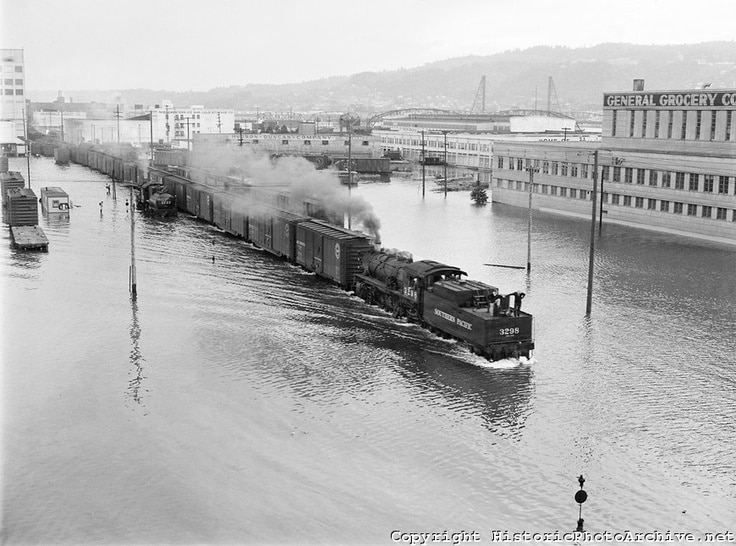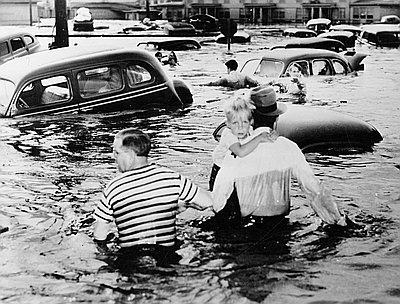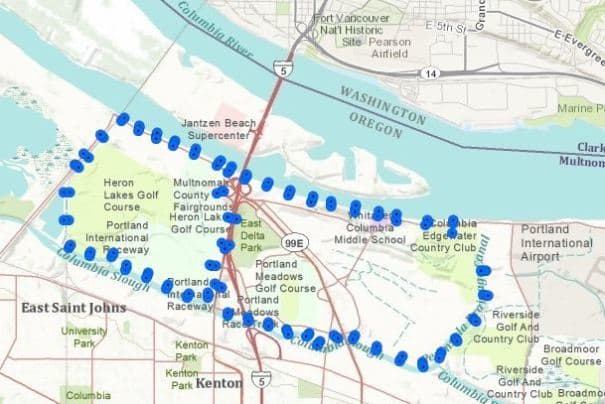Target Students: 3rd Grade
Historical Thinking Skill: Corroborating
Guiding Questions: How did the people of Vanport react to the flood? How did the Government react to the disaster?
Lesson Context: This lesson is intended to to be an introduction/exposure to primary sources for my class of third graders. Students will be given two videos to watch: one deals with personal interviews about the people living in Vanport, and the other is video of the flood. Students will also be given one primary source textual document to read. Students will use these three sources to discus the reliability of each source and the idea of what constitutes a source.
Video Sources:
Guided Question related to the video:
- How can we tell that the interview from the video reflects what happened on that day?
- Can we trust the video?
- What are your thoughts about the flood?
Purpose: The purpose of the video guided questions is to get students to think about what a primary source is and how it can be used. Since this is students first introduction into primary sources it is important to stop after each video and discuss as a class the above questions letting students guide the conversation as much as possible.
Primary Text:
Scaffolding Questions:
- When was the video made? When was the document written?
- Which source is more reliable?
- What don’t we know from the reading and the video? Where else could we look?
The scaffolding questions are the meat of the lesson. The overall goal is getting students to compare the information that is in both videos versus the information that the text document gives them. The lesson is primary based on conversation rather than product. For a product have students write down their own answers to the scaffolding questions before conducting the conversation.
Reflection:
The combination of videos and the text document is to show students that primary sources can come in all forms and that just because something is not a written text it can still be used as a primary source. As technology advances our sources will too. I did not want to overload my third graders with a bunch of long text, and spend half of the day going over every piece of information in the text. Instead I wanted them to see what information they could pull out that was related to the question. This lesson would follow the water cycle unit in science so that students will have a base knowledge of how a flood works and where on all the water came from.
I found the design process for this mini lesson a bit challenging. I wanted to do something related to my current student teaching; however, third graders do not have the skills or base knowledge to do anything advanced with primary sources. If I could get them to just be exposed to a primary sources and show them how to compare them that it would be about the right starting point for third graders to get exposed to historical thinking. I anticipate that I would have to spend a lot of time front loading different aspects of a primary source.
Sources:
Abbott, C. Vanport (1st ed.). The Oregon encyclopedia. retrieved September 25, 2015 Link
[guruburgess]. (2014, 12 6). Oregon’s Memorable Century 1948 Vanport Flood [Video File]. Retrieved from Link
Map [online image]. (2015). Retrieved September 25, 2015 Link
Peski, Brain Van. (2008). Vanport: Oregon’s Lost City [Video File] Retrieved From Link
Portland Flood, with switching trains [online image]. (1948). Retrieved September 25, 2015 Link
Vanport, Vanport Flood of 1948 [online image]. (1948). Retrieved September 25, 2015 Link




 Content— 3rd grade students will go over strategies for reading, breaking down, and solving story problems. These story problems deal with basic addition and subtraction operation that the students will be required to know before attempting the story problems. This lesson is based on Building Bridges Session 19 with activity worksheets 1.3 and 1.4 which have two subtraction and addition story problems with embedded work space.
Content— 3rd grade students will go over strategies for reading, breaking down, and solving story problems. These story problems deal with basic addition and subtraction operation that the students will be required to know before attempting the story problems. This lesson is based on Building Bridges Session 19 with activity worksheets 1.3 and 1.4 which have two subtraction and addition story problems with embedded work space.